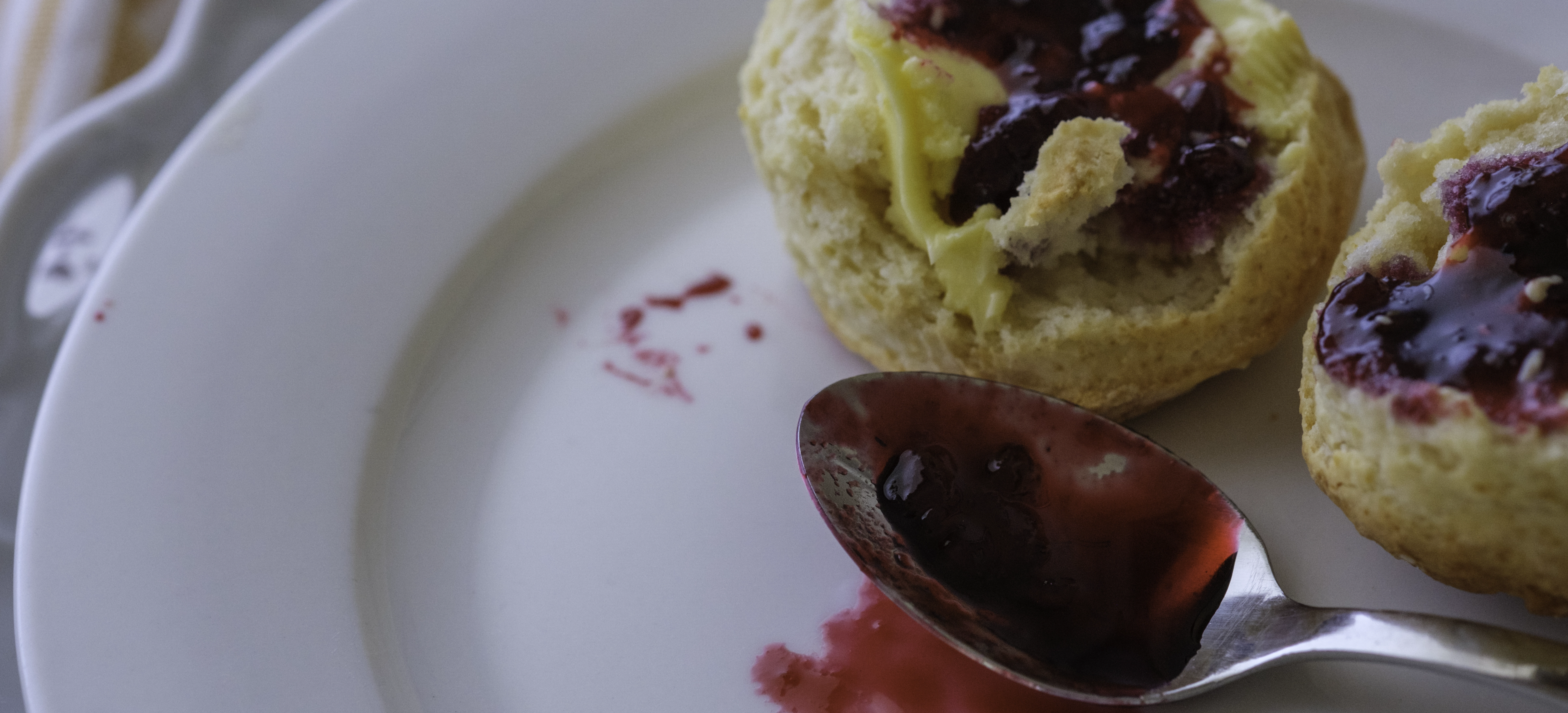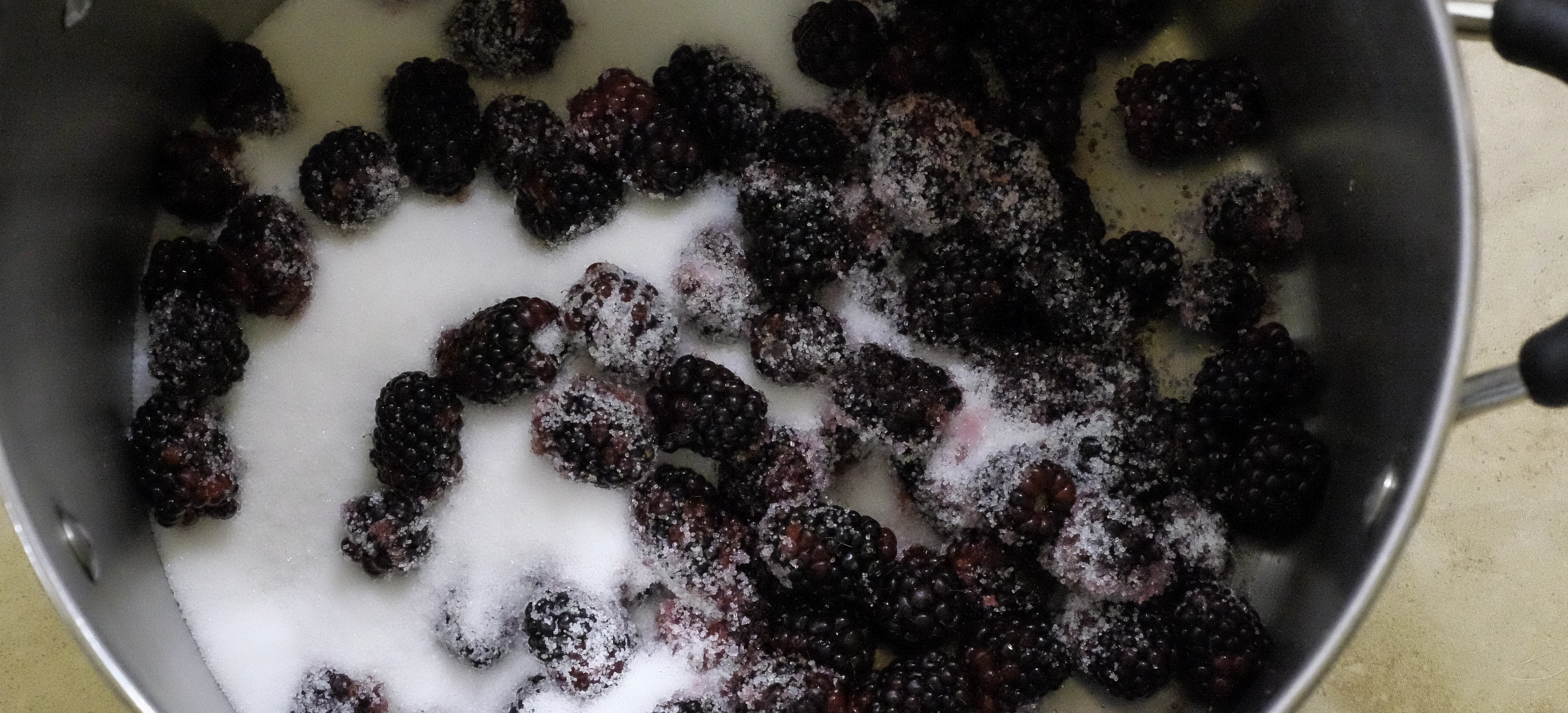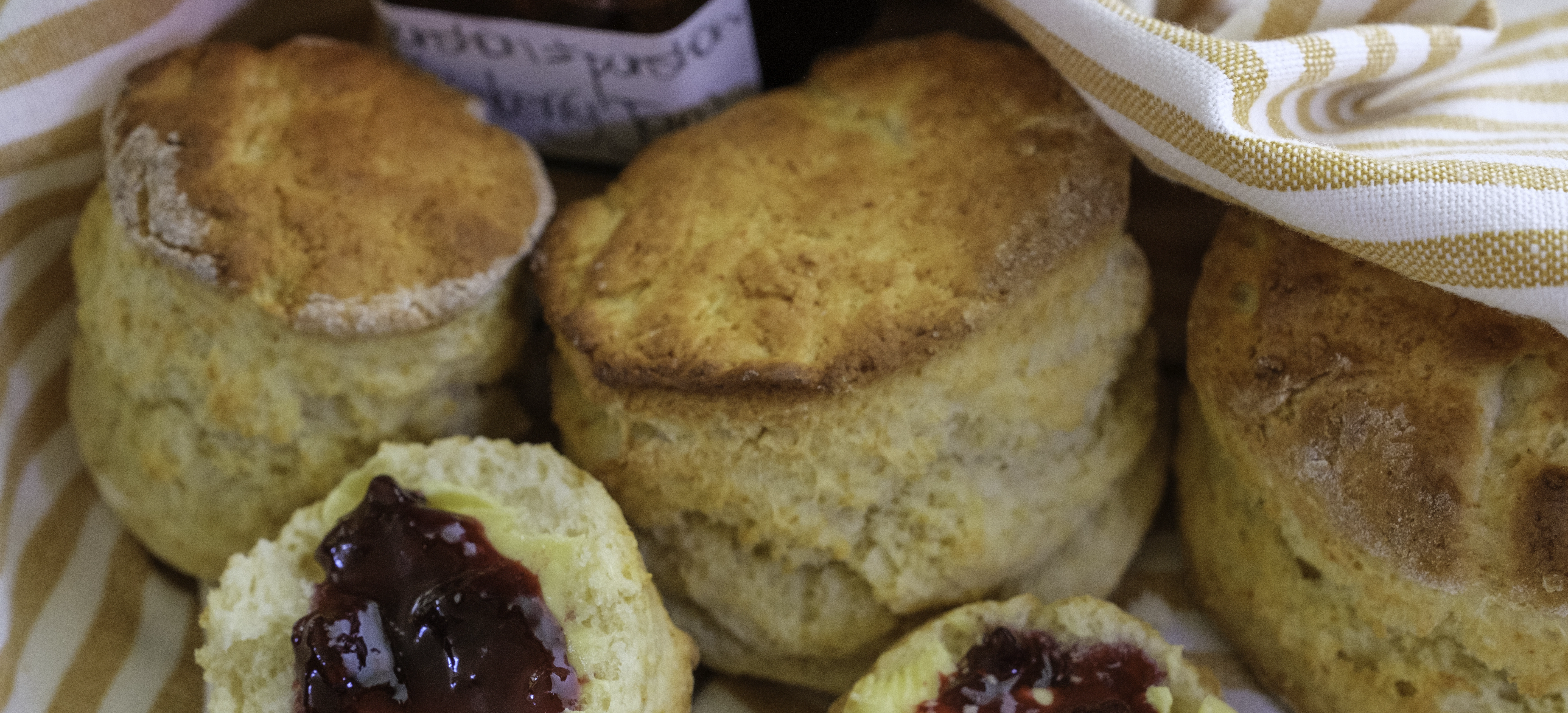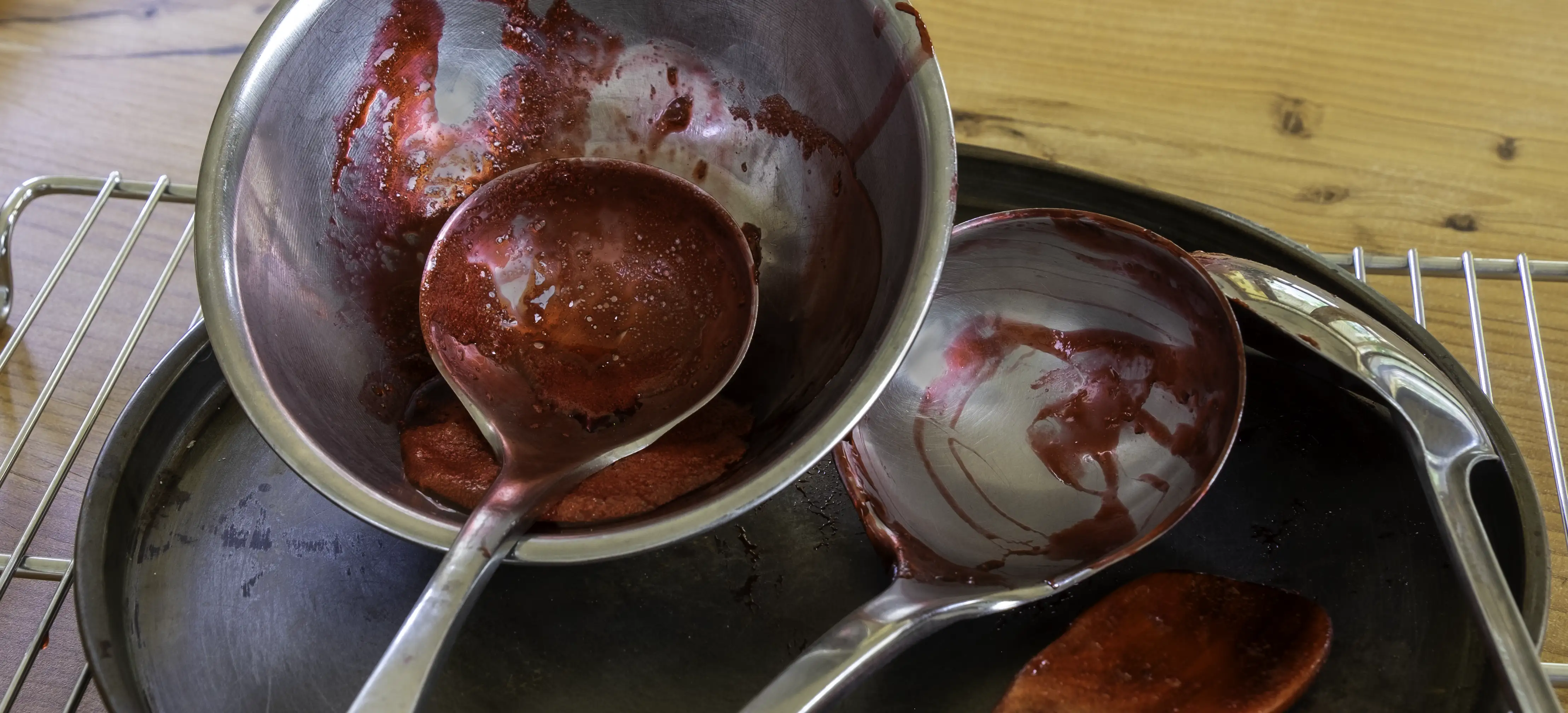Silvanberry and Vanilla Jam
- Jams, Jellies & Marmalades

Silverberry and vanilla jam on a traditional English scone are one of my OMG preserve moments. Its sweetness is just offset with a hint of natural tartness and combines so sooooo well with the rich creamy flavour of vanilla. If you enjoy a “grown-ups” red jam, this one is for you. A little bit will go a long way as this preserve is packed full of fruit and flavour. Silvanberries are not generally found in supermarkets but may be available in your local farmer’s market.
The fruit ripens from late November to December and continues to bear fruit through January and often into February. Our Silvanberries always produce a prolific crop of sweet large cylindrical shiny black berries. By the end of the silverberry season, we have eaten and gifted a lot of silverberry jam, chutney, sauce, and ice-cream. What a wonderful celebration – one we look forward to every year
- Preparation Time:
- 30 minutes
- Cooking Time:
- 20 minutes
- Quantity:
- 5 x 200ml jars
PREPARATION
Sterilise glass jars and lids with a protective lining. Have the jars and lids dry, hot and ready for the bottling stage
Warm sugar

INGREDIENTS
- 1kg
- Silvanberries
- 700g
- White sugar
- 309 ml
- Lemon juice
- 2
- Lemons, grated rind
- 1 teaspoon
- Vanilla bean paste
METHOD
To rinse the silvanberries, place in a colander, immerse in a sink of cold water and gently swirl. This will avoid fruit damage. Remove from the water and allow a few minutes to drain. Then remove the excess moisture by gently patting or allow to rest on paper towel or a clean dry tea towel.
Remove any spoiled, damaged or mouldy fruit.
Place all the ingredients in a stainless-steel preserving pan or heavy bottomed stainless-steel pot.
Gently heat the mixture, stirring occasionally, until the sugar is completely dissolved. The fruit will start to gradually break down into a jammy consistency. Then bring to the boil quickly and boil rapidly until the jam reaches its setting point or 105 degrees C (220 degrees F).
Skim as required, using a sharp-edged spoon or ladle, to remove the scum that accumulates around the edge of the pot. Beware of hot spluttering jam – it can easily burn uncovered arms and hands. Carefully stir occasionally to prevent the fruit from sticking to the bottom of the pot.
Remove from the heat, place on a heat resistant surface and allow to sit for 5 minutes. If bottled immediately it’s likely the fruit will rise from the bottom of the jar.
Use a funnel to pour into hot dry sterilised screw cap sealable bottles, fill to approximately 2.5cm (1 inch) from the top of the jar and seal with hot dry lids. This the HHH method - hot preserve, ladled into hot jars and sealed immediately with hot dry lids. The HHH method reduces the risk of contamination prior to and after sealing.
Alternatively allow preserve to cool completely and seal with a screw top lid.
Allow to cool and wipe the jars down to remove any spills during the bottling stage.
Label and store in a cool dark place in the kitchen or pantry.
Allow the jam to mature for at least 2 weeks before eating.
NOTES

- Silvanberries have a medium acid and pectin content, which is similar to blackberries. Generally, not as much lemon juice is required to get a good set in comparison to making strawberry jam. Refer to my post, What Makes Jam, Jelly, Marmalade Set, to understand how preserves set. It also contains a handy Acid and Pectin Chart so you can get even your most creative combinations to set.
- Choose ripened clean berries. Do not use overripe and never use mouldy fruit as this will produce a poor-quality jam.
- If you don’t have a preserving pan, use a large heavy bottom pot, preferably stainless steel. This will distribute the heat evenly across the pan and the jam while it is cooking. Ensure there is enough space available in the pot for the mixture to double in size while it rapidly boils.
- To warm the sugar put the recipe quantity in an oven proof container and place in a preheated oven to 150 degrees C for approximately 10 minutes. The sugar should be warm throughout the bowl. Warmed sugar dissolves quickly and a rapid boil until the setting point is reached helps to preserve the fresh fruit flavour.
- Ensure the sugar has completely dissolved before boiling otherwise the sugar may crystallise later in the jar.
- Rapidly boil the jam until it reaches the setting point, stirring occasionally to prevent the jam from sticking on the bottom of the pot. But not too often as this will lower the temperature and delays reaching the setting point. Long slow simmering at this point will reduce the colour and flavour.
- Cooking times are an approximation only. They are provided as a guideline as cooking times are influenced by the type of pot and its diameter and height, speed of cooking and fruit ripeness, size, and moisture level.
- Removing the scum
- Jam, jellies, and marmalades can produce a scum while they are boiling. Impurities from the fruit and sugar will rise to the surface and a fine frothy foam will move towards the edge of the preserving pan. Some fruits will produce more scum than others.
- This is a natural self-clarification process and makes the task of making a high-quality preserve easier. Removing the scum increases the preserve’s clarity.
- Using a stainless-steel spoon, skim the scum from around the edge of the preserving pan. Be careful to remove just the scum and not the jam. This can be done while the jam is boiling and/or once it has been taken off the heat.
- Do not attempt to remove the scum from the centre of the boiling jam, as there is an elevated risk the jam will splutter and hot jam burns.
- This is very important if it is being submitted for competition. Remove the scum before bottling.
- The HHH method
- This sealing method, using HOT dry jars, HOT dry lids and HOT preserve, creates a vacuum seal as it cools.
- The “popping” sound, often heard in the kitchen, signals a successfully vacuum sealed jar.
- This method of sealing is preferred as there is reduced risk of contamination prior to and after sealing.
- Using paraffin wax
- If there are no lids, its possible to seal with paraffin wax while the preserve is hot and cover with cellulose or plastic film and secure with a rubber band or kitchen twine. This method has its limitations and is not as safe a sealing with lids. Le
- Sealing with wax is not a long-term solution. Use within a couple of months.
- If for some reason, a jam doesn’t set don’t discard it. It can either be re-boiled to reach its setting point or used as a delicious sauce to accompany cake, dessert or spooned lovingly over ice-cream.
- Variations: Try a combination of soft berries to create a delicious mixed berry jam. The lemon juice is an essential ingredient as most berries are low in pectin and acid and the lemon juice will help it to set.
- The Silvanberry, a blackberry hybrid, was also once known as the Kroonberry, Scoresby Selection and the American brambleberry. It is renowned for producing a prolific crop of sweet large cylindrical shiny black berries. They are generally considered to be equal in complexity of tastes to the Boysen, Logan and Young berry. The fruit ripens from late November to December and continues to bear fruit through January and often into February.
- Vanilla: Grown in Mexico, Central America, Madagascar, India, Sri Lank, Indonesia and Tahiti. Depending on where they are grown and how they are dried and cured and type of orchid species used, they will vary in are varying levels of vanillin (the essential flavouring element in vanilla) and have different flavour profile. Madagascar vanilla harvested from Vanilla plantifolia contains the most vanillin, 2% and is renowned as the richest and most balanced. Vanilla extract is made from macerating the prepared pods in alcohol. Seek out labels with “natural extract” and with around 35% alcohol and whole dark and plump pods as this indicates a good sweating and maturing process to release the vanilla compounds.

